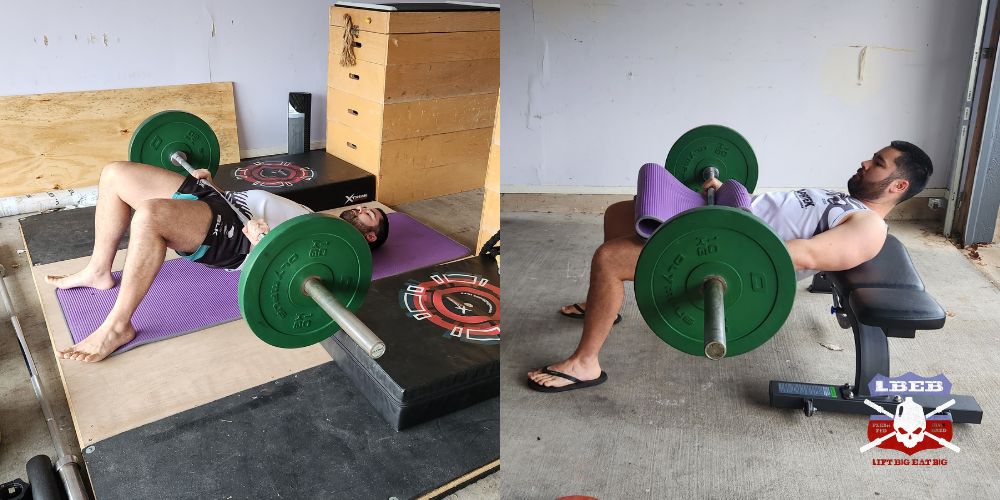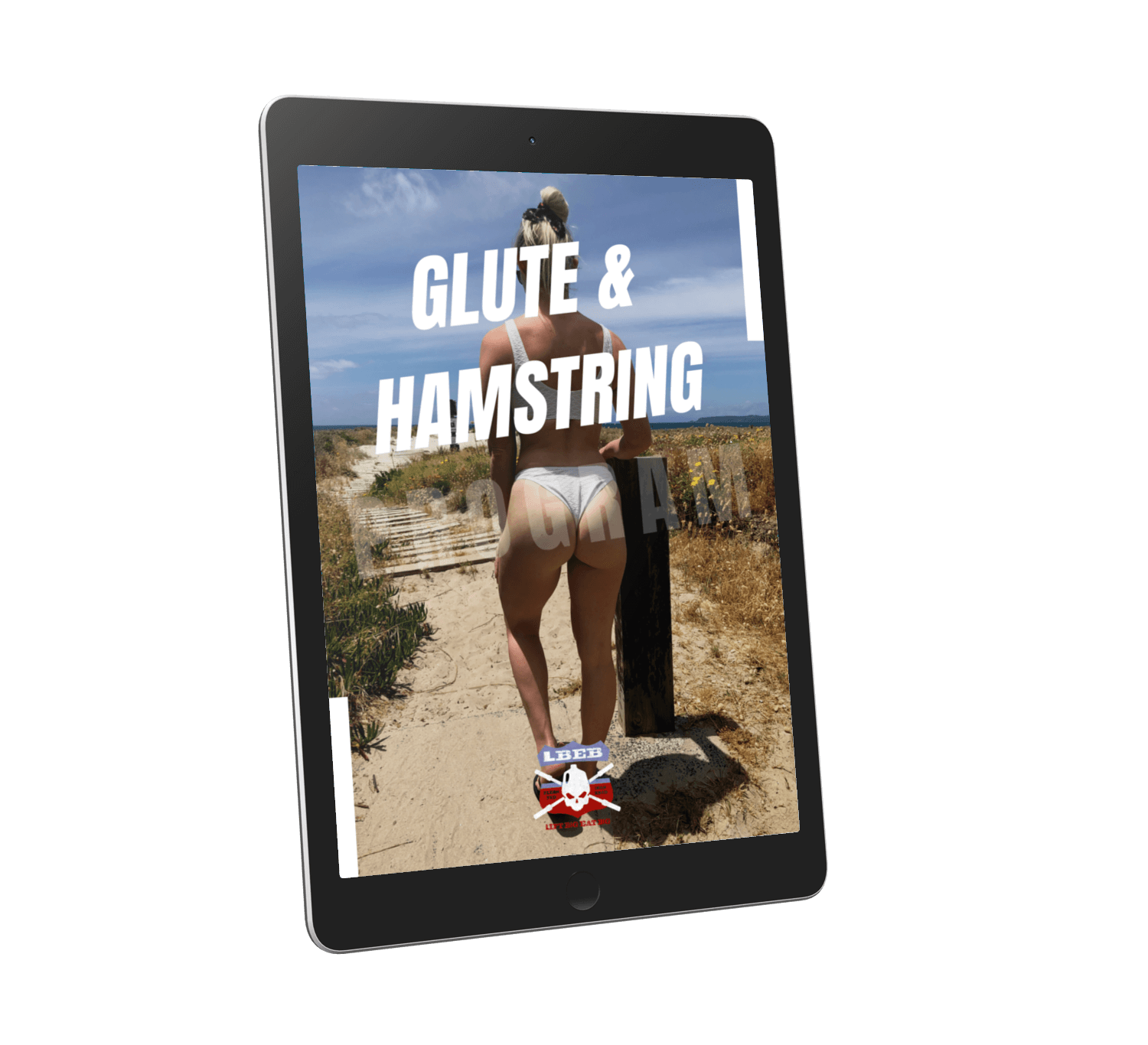Seeing the glute bridge and hip thrust on the same program can seem confusing. Especially when people often use them interchangeably. However, they are distinctly different exercises. Here’s how.
The main difference between the glute bridge and hip thrust is the body position. The glute bridge is performed lying on the floor, and the hip thrust is performed with your back against a box or bench.
So, why would you want to perform a glute bridge or hip thrust? Don’t they work the same muscles anyway?
Table of Contents
What Is A Glute Bridge?
The glute bridge is a hip extension exercise characterized by lying supine on the floor. Meaning your back is flat on the floor as you push with your feet to elevate your hips. The glute bridge has many loading variations, such as the barbell, dumbbell, sandbags, and resistance bands.
What Is A Hip Thrust?
Like the glute bridge, the hip thrust is a hip extension exercise with back support. Therefore, you sit with your torso at a 45° angle to the floor, supported by a box or bench behind you. You can use the same equipment for loading, but because of the increased hip flexion, skinnier apparatus like barbells and bands feel better.
Glute Bridge vs. Hip Thrust Key Differences
Body Position
The most apparent difference is the body position. The glute bridge is performed supine on the floor, whereas you lean against a box or bench for the hip thrust.
Range Of Motion
Because of the different body positions, hip thrusts allow a greater range of motion. The glute bridge moves from a semi-flexed to an extended hip position. In contrast, the hip thrust moves from an extremely flexed position to an extended position.
A non-peer-reviewed thesis shows that the barbell travels a significantly greater distance during the hip thrust than the glute bridge [1].
Loading Potential
Because of the range of motion differences, the glute bridge allows you to use heavier loads. This may influence your exercise selection depending on the phase of training you’re in. For example, if you need to minimize fatigue or want to overload end-range hip extension, you may select the glute bridge over the hip thrust.
Hypertrophy
In my experience, the hip thrust is a better butt builder. Even though research has shown the glute bridge to elicit more significant glute activation [2]. But we can’t rely on muscle activation data alone to determine what makes a good exercise for gaining muscle.
The increased range of motion during the hip thrust means the glutes undergo a longer stretch and are under tension for longer periods. These are key criteria for maximizing muscle growth. Combined with this knowledge, we see the hip thrust has one of the highest glute activation numbers behind the step-up [3].
More specifically, the upper glutes are activated to the highest degree.
Do Glute Bridges & Hip Thrusts Work The Same Muscles?

The glute bridge and hip thrust work the same muscles but to varying degrees. The glute bridge elicits greater glute activation, whereas the hip thrust activates the quads more [1][2]. But overall, both are hip extension exercises primarily working the glutes.
Are Glute Bridges Easier Than Hip Thrusts?
Glute bridges are easier than hip thrusts because of the reduced range of motion. But they are also easier in equipment and setup. Glute bridges only need equipment to load your hips. Hip thrusts require a sturdy bench or box often anchored against a wall to stop it from moving.
The time it takes to set up the hip thrust is often a deterrent for lifters using it, especially in crowded commercial gyms. Therefore, the glute bridge can be an easy alternative.
Glute Bridges vs. Hip Thrusts: Which Is Better?
For the goal of strength, size, or athletic performance, the hip thrust is better, in my experience. However, that doesn’t mean the glute bridge is useless. The glute bridge can provide exercise variation, reduced range of motion to mitigate fatigue, and overload hip extension.
I recommend using the hip thrust most of the time and intermittently substituting the glute bridge for variation.
References
1. Zabaleta Korta, A. (2018). Biomechanical effects of Hip Thrust and Glute Bridge on hip extensors.
2. Kennedy, D., Casebolt, J. B., Farren, G. L., Fiaud, V., Bartlett, M., & Strong, L. (2022). Electromyographic differences of the gluteus maximus, gluteus medius, biceps femoris, and vastus lateralis between the barbell hip thrust and barbell glute bridge. Sports Biomechanics, 1-15.
3. Neto, W. K., Soares, E. G., Vieira, T. L., Aguiar, R., Chola, T. A., de Lima Sampaio, V., & Gama, E. F. (2020). Gluteus maximus activation during common strength and hypertrophy exercises: A systematic review. Journal of sports science & medicine, 19(1), 195.

